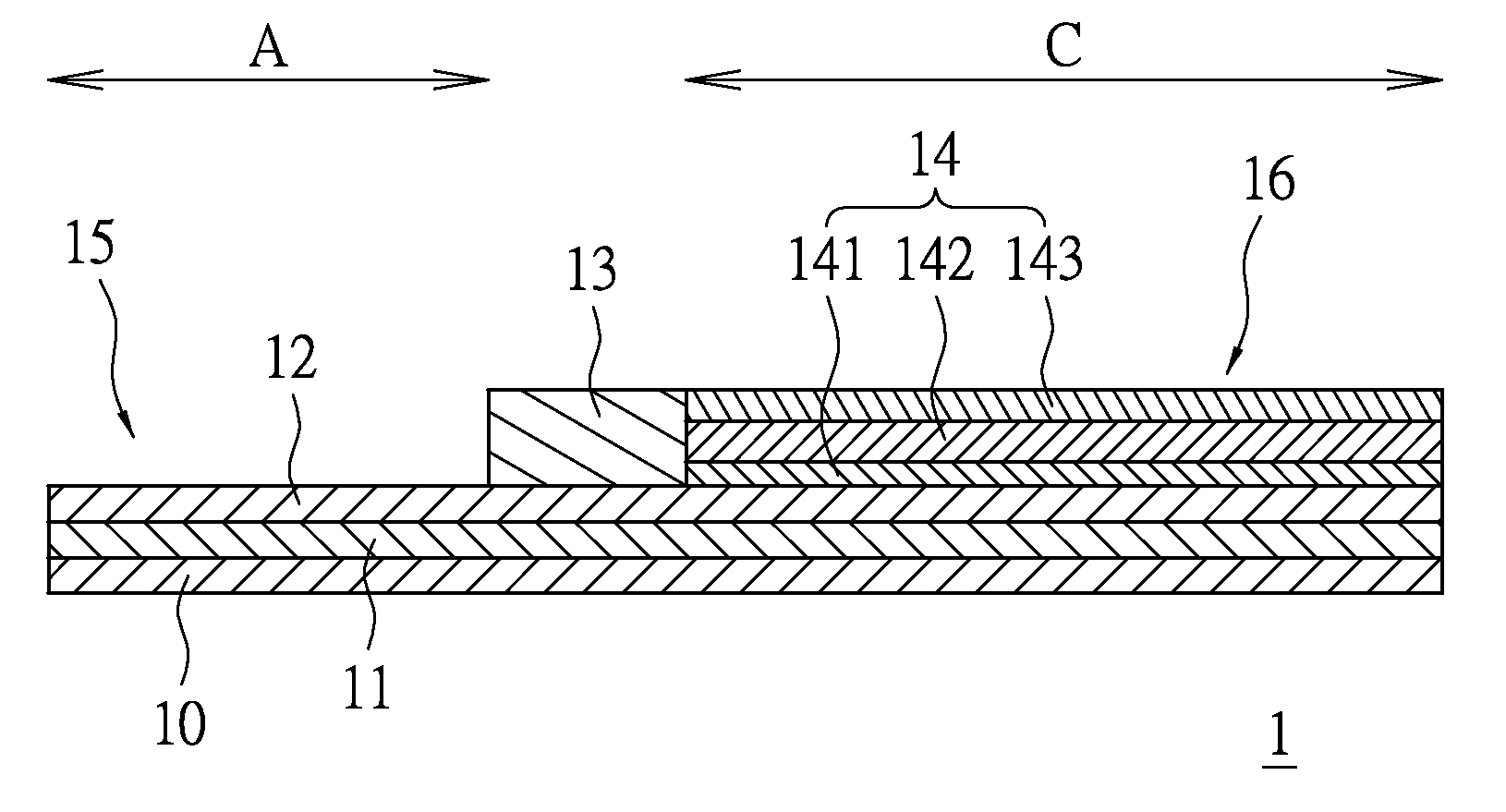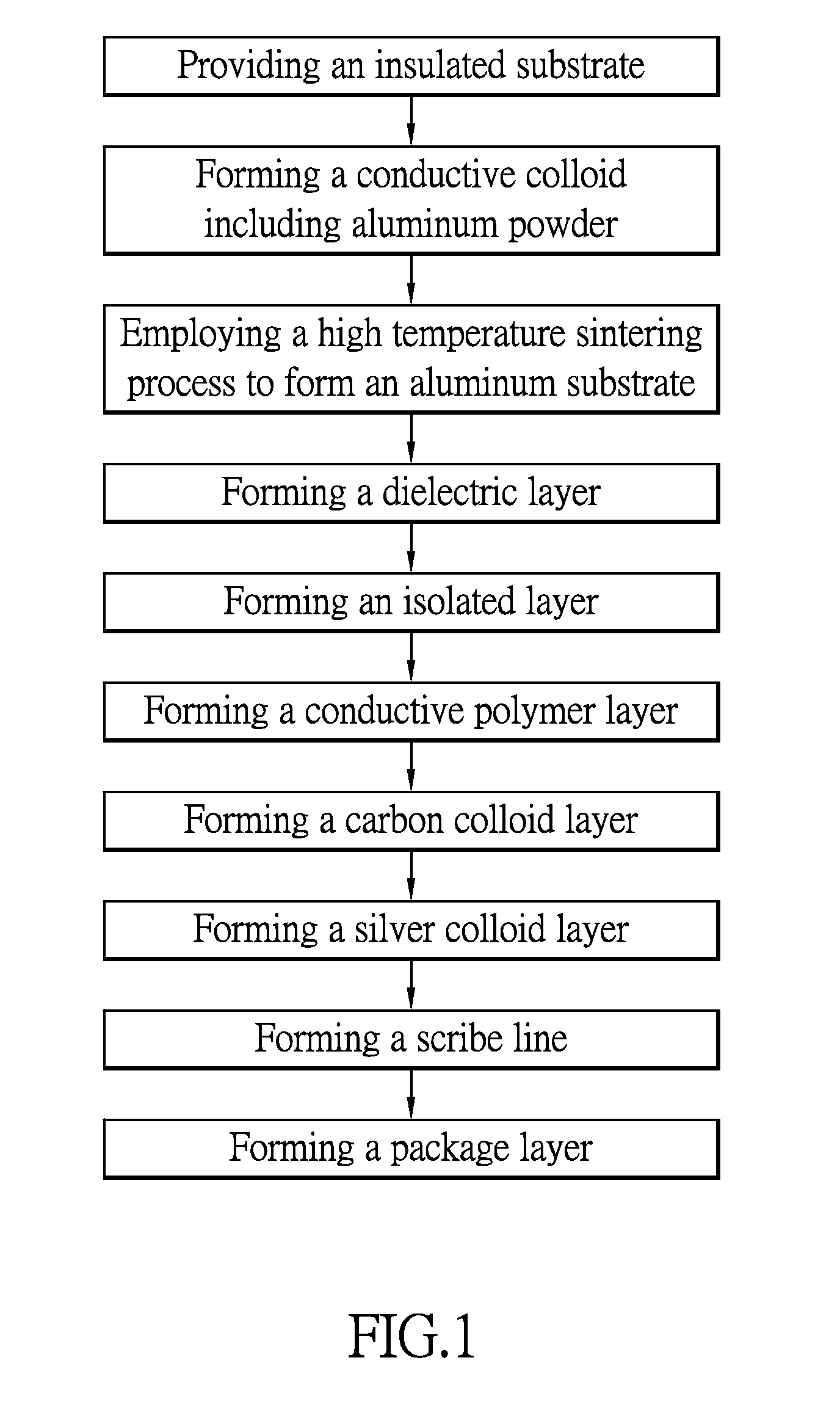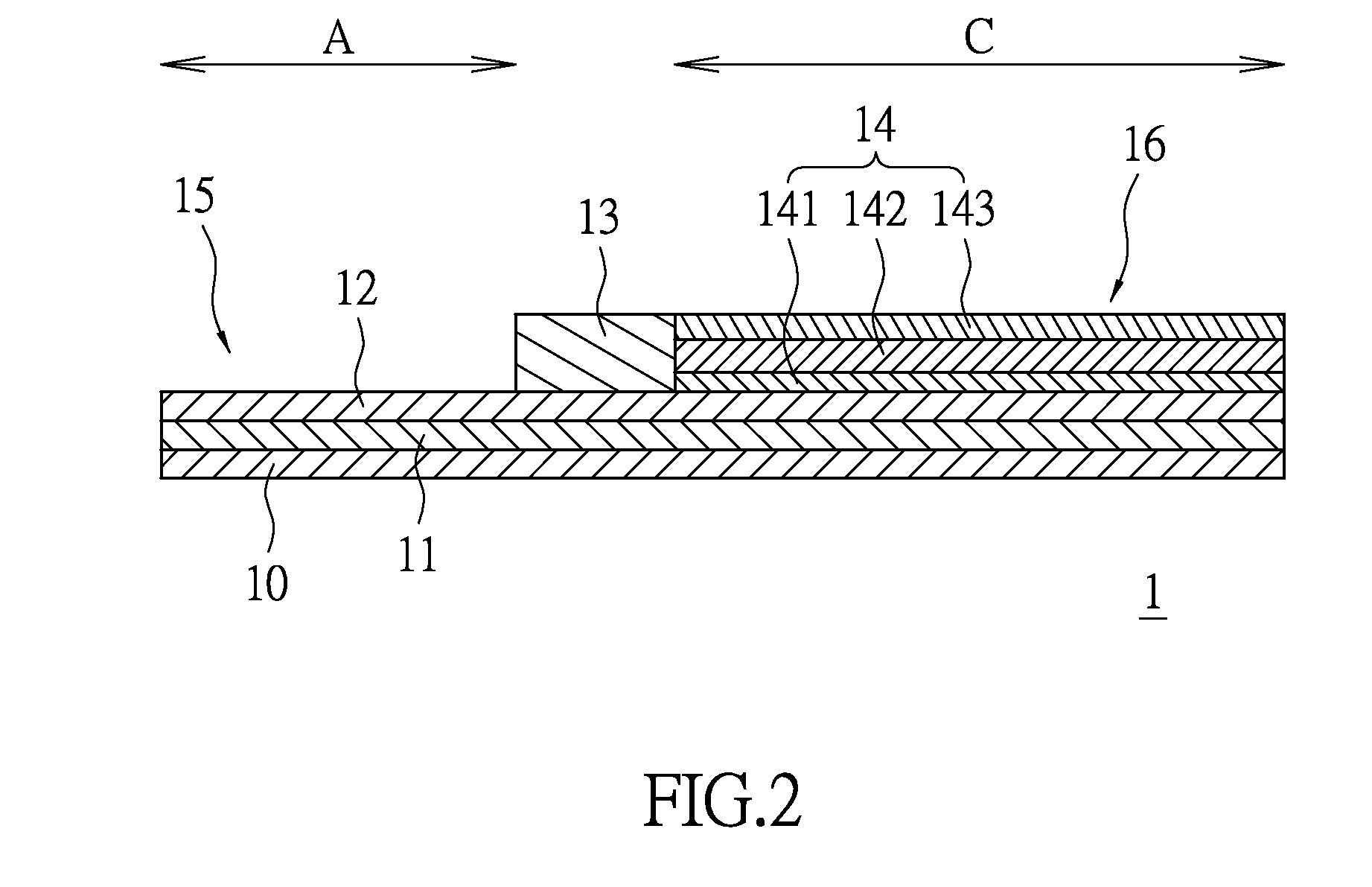Method for fabricating solid electrolytic capacitors
a solid electrolyte capacitor and capacitor technology, applied in the manufacture of electrolytic capacitors capacitor dielectric layers, etc., can solve the problems of increasing costs, increasing the cost, and the small particle size of tantalum powder requires additional processing efforts to achieve, so as to reduce manufacturing costs, simplify the process, and achieve high yield of solid electrolyte capacitors
- Summary
- Abstract
- Description
- Claims
- Application Information
AI Technical Summary
Benefits of technology
Problems solved by technology
Method used
Image
Examples
first embodiment
[0023]FIG. 1 is a flow chart for a first embodiment of the method, and in conjunction with FIGS. 2 and 3, the method is further explained in details.
[0024]Initially, an insulating substrate 10, preferably an aluminum oxide (Al2O3) substrate, is provided.
[0025]Next, a conductive gel (not shown in figures) including aluminum powder is formed, preferably formed by a thermosetting resin containing from about 0 wt % to about 50 wt %, a powder of aluminum containing from about 30 wt % to about 100 wt %, and a curing agent containing from about 0 wt % to about 50 wt %. The thermosetting resin is preferably an epoxy resin but is not limited thereto. Moreover, to improve conductivity, the particle size of the aluminum powder ranges from 0.05 to 5 microns. The aluminum powder can be pre-treated in order to provide uneven surfaces for obtaining more surface areas. The most suitable curing agent is preferred to be latent curable. Furthermore, the conductive gel may contain inorganic filler from...
second embodiment
[0033]FIG. 4 is a flow chart and in conjunction with FIG. 5 illustrate a second embodiment for the method. Foremost, a powder of aluminum is provided. The aluminum powder may contain a binder such as camphor, stearic acid, polyvinyl alcohol, or naphthalene. The preferred aluminum powder is formed with the binder while the preferred weight percent of the binder ranges from 3 to 5%.
[0034]Next, a thoroughly mixed aluminum powder and binder mixture is cold compressed into a plurality of rectangular parallelepiped aluminum pellets 21 with a compression molding process. Preferably, the cold press load ranges from 3 to 15 MN / m2 to provide the desired bulk density. In addition, a lead electrode 211 is inserted within the aluminum powder in a cantilever fashion during the cold press process for mutually communicating electricity. The preferred lead electrode 211 is an aluminum or a tantalum wire but not limited to the examples provided therein. The preferred lead electrode 211 in the second ...
PUM
| Property | Measurement | Unit |
|---|---|---|
| particle size | aaaaa | aaaaa |
| temperature | aaaaa | aaaaa |
| particle size | aaaaa | aaaaa |
Abstract
Description
Claims
Application Information
 Login to View More
Login to View More - R&D
- Intellectual Property
- Life Sciences
- Materials
- Tech Scout
- Unparalleled Data Quality
- Higher Quality Content
- 60% Fewer Hallucinations
Browse by: Latest US Patents, China's latest patents, Technical Efficacy Thesaurus, Application Domain, Technology Topic, Popular Technical Reports.
© 2025 PatSnap. All rights reserved.Legal|Privacy policy|Modern Slavery Act Transparency Statement|Sitemap|About US| Contact US: help@patsnap.com



